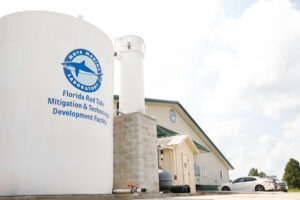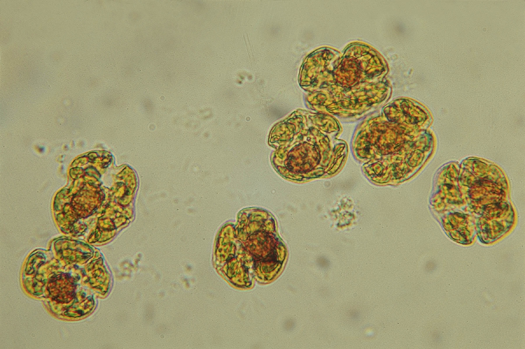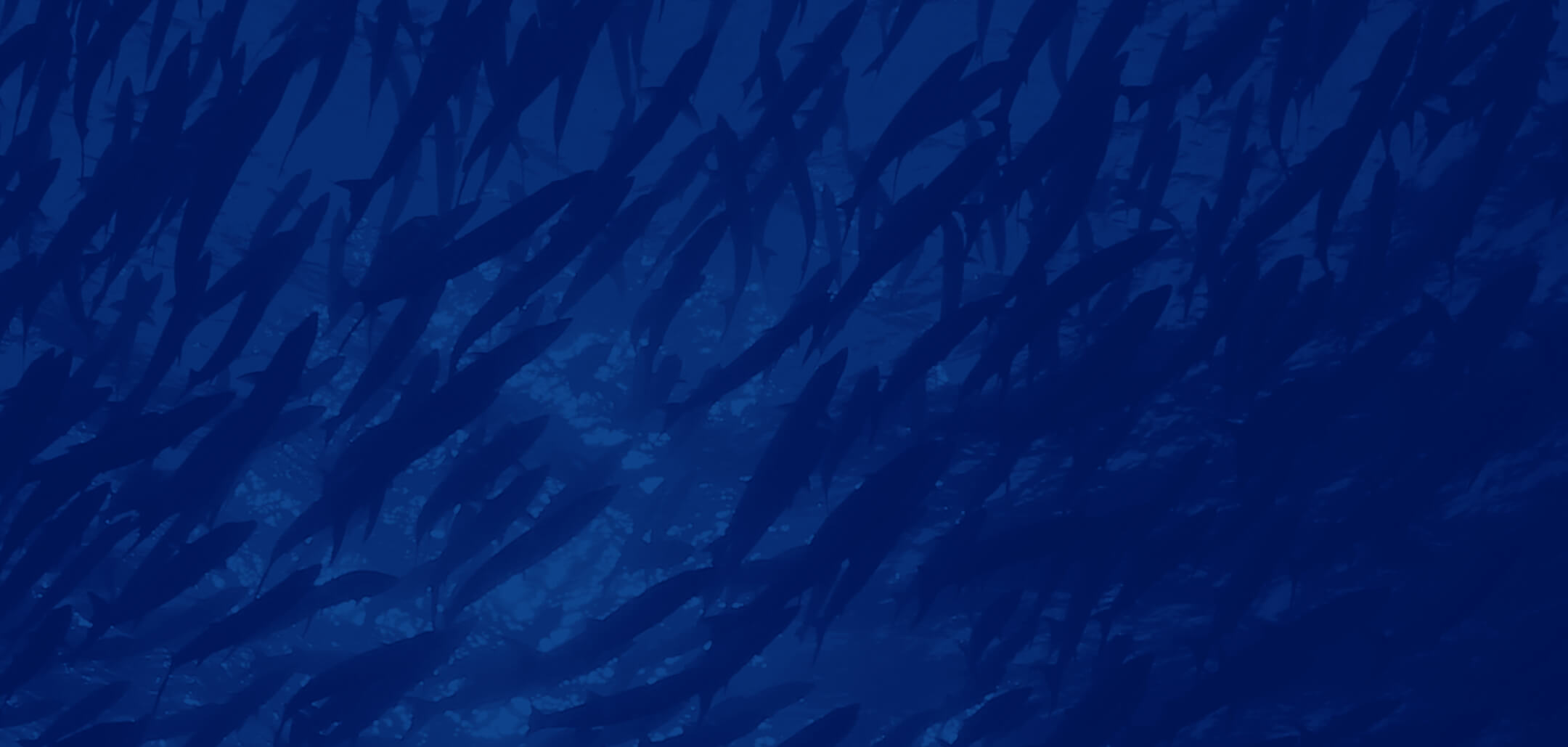There are thousands of species of algae in fresh and marine waters; these organisms form the basis of the food web and provide an important source of the oxygen we need to breathe. While most species are harmless to humans and animals, a growing number of species are being found worldwide that produce toxins that can make humans sick and cause widespread ecological and economic harm. When these species accumulate, they form harmful algal blooms.
Floridians along the Gulf Coast are probably most familiar with Karenia brevis, the organism that causes our own red tides. K. brevis produces brevetoxins—powerful neurotoxins—that can kill marine animals and be harmful to humans. These red tides form many miles offshore, sometimes causing no impact to humans. However, when they are carried to shore by water movement, they can seriously impact coastal communities’ quality of life. Red tides can kill fishes and cause illness or death in marine mammals, sea turtles and seabirds. People who inhale red tide toxins can experience respiratory impacts, especially those with asthma and other chronic respiratory conditions. People who consume red tide-contaminated shellfish can experience neurotoxic shellfish poisoning.
Mote researchers from many different disciplines investigate the Gulf of Mexico’s red tides to understand how blooms form, how they dissipate, how they affect wildlife and people, and how we can mitigate their impacts.
Quick Links
Forecasts/Current Conditions
- Florida Fish and Wildlife Conservation Commission Red Tide Task Force
- Blue Green Algae Task Force
- Mote’s Beach Conditions Reporting System
- Florida Fish and Wildlife Conservation Commission Red Tide Status Updates
- NOAA Harmful Algal Bloom Operational Forecast
About Red Tide
- FAQs about Florida red tide
- One common question: Red tide vs. red drift algae: What’s the difference?
- At Mote, the following programs and initiatives have a major emphasis on red tide research:
Mote-FWC/FWRI Cooperative Red Tide Program
Florida red tide causes adverse impacts to public health, natural resources and the economy. This cooperative effort between Mote Marine Laboratory and the Fish and Wildlife Research Institute of the Florida Fish and Wildlife Conservation Commission is designed to help mitigate the adverse impacts of Florida red tide along the Florida Gulf coast. The Program includes red tide monitoring, research and public outreach and education. This joint research program has resulted in better tools and ongoing monitoring for red tides along the Gulf Coast, along with better predictive capabilities to forecast where the effects of red tides might be felt by coastal populations, along with new public health messages new tools.
Learn more about the Cooperative Red Tide Program
Florida Red Tide Mitigation & Technology Development Initiative
The Florida Red Tide Mitigation & Technology Development Initiative is a partnership between Mote Marine Laboratory (Mote) and the Florida Fish and Wildlife Conservation Commission (FWC) that establishes an independent and coordinated effort among public and private research entities to develop prevention, control and mitigation technologies and approaches that will decrease the impacts of Florida red tide on the environment, economy and quality of life in Florida.
Learn more about Mote’s Red Tide Mitigation and Technology Development Initiative




